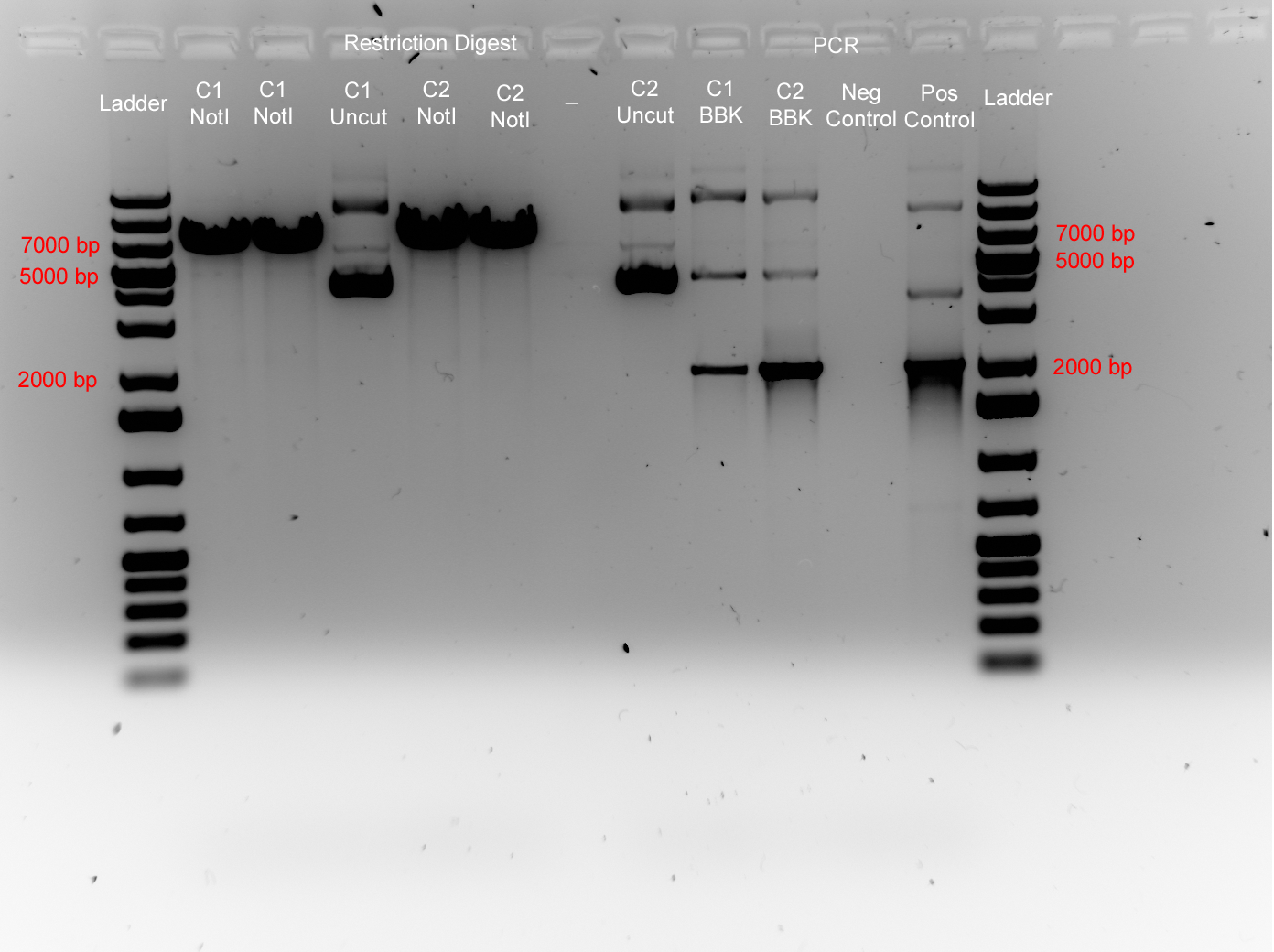Team:Calgary/28 May 2009
From 2009.igem.org

|
CAROL
Modeling Readings Continued
LuxCDABE-M-F:CCATTAATGAATTGCCGGATAATCTGGATTTTGAAGGCC LuxCDABE-M-R:GGCCTTCAAAATCCAGATTATCCGGCAATTCATTAATGG
|
|
EMILY
Sequencing of LuxOD47E in psB1AC3
File:2009.05.28.D47E BBkVer RD+PCR.tif
|
|
FAHD
Ethics paper
Today I helped made our ethics paper handout that we will present the ethics workshop tomorrow. I also made follow up calls to a couple of R&D and O&G development companies.
|
|
JAMIE
Sequencing luxOU with VF1 and VF2.
|
|
JEREMY
Send LuxO D47A in psB1AC3 Colony 2 to get sequenced
Although RD and PCR are effective means of verifying the presence of a sequence of DNA, the gold standard for verification is DNA sequencing. LuxO D47A in psB1AC3 Colony 2 was sent to the University of Calgary DNA Sequencing Facility (University Core DNA Services, Calgary, Alberta, Canada). Primers used were VF2 (anneals near the BBK prefix on the BBK vector - used as a forward primer) and VF1 (anneals near the BBK suffix on the BBK vector - used as a reverse primer). The template was prepared such that there was 100ng/1kb of DNA (gene of interest + vector).
After analyzing the sequencing results, it was evident that luxO D47A was absent from the psB1AC3 vector.
|
|
KATIE
Continuing to Discover
This week, the island has finished processing, but we do not have permission to build yet so our second life team continues to attempt to obtain a competent understanding of manipulating objects within the various public sandboxes, mainly from the Knights Bishop public group sandbox.
I also experimented with the manipulation of avatars: Skins, which are skins worn over the avatars shaped in world by the sliders, are made in any raster based image editor capable of producing .tga files, Photoshop, Paintshop Pro, GIMP being the big ones. The skins are then uploaded and worn. Using sculpted prims (sculpties) seems to be the most promising and flexible method to manipulate an avatar’s look. I also had to do a survey to obtain $150 LD.
|
|
KEVIN
Matlab and symbiology
Familiarizing with the matlab program provided by MathWorks, and its biological tool called Symbiology.
No experiments were done on this day.
|
|
MANDY
More building in Second Life
While waiting for us to get the ability to script/build on our island, we continued in Kings Bishop. We played with a 'door' script in order to make fridges, waterbaths, and other equipment with the ability to be opened, making them more realistic. Also, with our idea to make floating spheres that people could do the biobrick simulator in, I started learning the scripts for teleportation in order for people to get in to the spheres. Also built these spheres.
|
|
PRIMA
Marketing
I spoke to the team about logos. We discussed logo ideas and designs. Also, I contacted the Gauntlet (U of C campus newsletter) about publishing a story on iGEM. I spoke to one of the journalists and scheduled a meeting to interview some of my teammates.
|
|
VICKI
Gel electrophoresis of PCR and restriction digest products from yesterday
Purpose:
To analyse the PCR and restriction digest products from yesterday by running them on the gel. This will show:
Materials and methods:
Results:
|
 "
"











